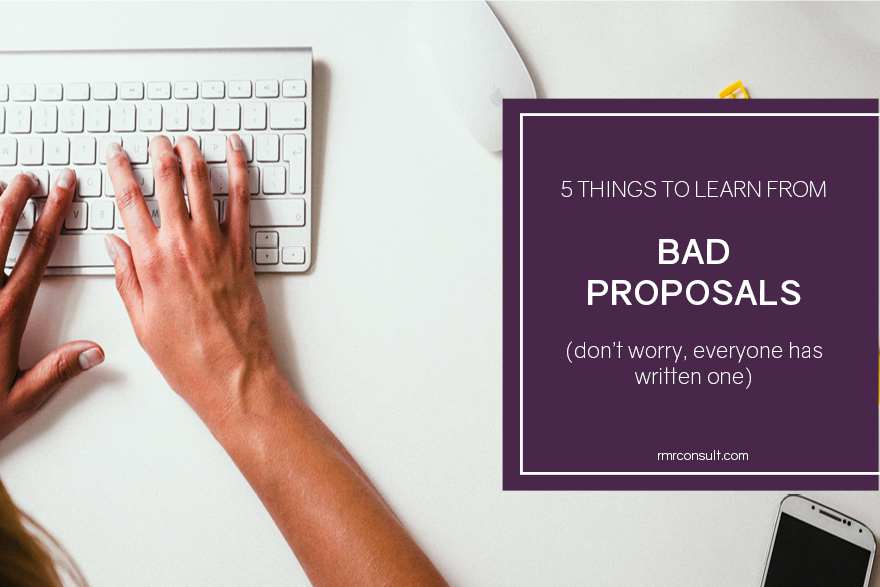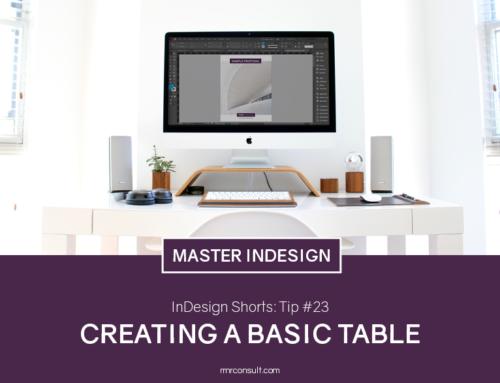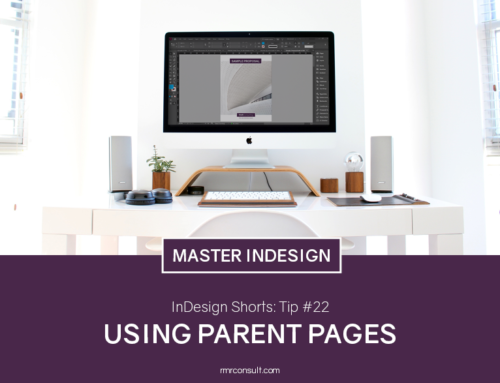5 Things to Learn from Bad Proposal Examples
I’ve put together hundreds of proposals. So naturally, I have a few examples of bad proposals. As is the way in marketing, the minute one proposal goes in, another RFP drops, which meant in my early years I never looked back at past proposals. Huge mistake, right? We can’t learn if we don’t review our work!
It wasn’t until I was submitting a proposal to a client my firm hadn’t been able to get work with for over ten years that I finally looked back. I pulled the last three proposals that were submitted to the client (not all by me), grabbed a red pen and a highlighter, and redlined every. single. page.
I bled all over those drafts.
I was horrified by them. They were filled with boilerplate, spelling errors, and terrible graphics. I kept thinking, how the heck did these make it to print? The simple answer is that the writers of the time (again, myself included) didn’t see anything wrong. They hadn’t made the mistakes yet, hadn’t gotten edits that called attention to them and thus hadn’t learned from them.
This is why we go back, whether it’s for a debrief or simply to review our own work, and look for areas of improvement.
Everyone can learn from both great and lousy proposals, so today I want to take a look at some bad proposal examples and see what lessons we can pull from them.
This post is written out of love for my fellow marketers. If at any point it sounds like I’m pointing fingers right at you, don’t worry, I’m not. I’ve made many of these mistakes at some point, too. Besides, I’ve seen a LOT of proposals, and I can tell you that most firms have fallen victim to at least one (though often more) of these mistakes in their histories.
1. Keep it Relevant
The example:
I once watched a proposal go out the door containing projects that were over 15 years old. 15 years. Was it because the company didn’t have any relevant projects within a more recent time frame?
Nope. The architect that put the proposal together included over twenty project sheets, only half of which were probably in the time frame specified in the RFP. The rest dated back to the 90s. Some were from consultants and didn’t add additional value to the overall proposal.
The solution:
If you specialize in a particular type of project, you’ve likely accumulated a substantial library of projects to present. That’s great! Pick about five of your most relevant projects to feature, and sprinkle the rest in tabs, sidebars, or list them at the end of your portfolio section.
Pay attention to RFP requirements. If there are restrictions on sections (only including projects completed in the last five years, for example), make sure your content adheres to them. Blatant disregard for client directions in your proposal signals to the client that you may blatantly disregard their opinions during the project, too.
Include consultant or partner information only if it adds value. For instance, if your consultant has a long-standing relationship with the client, or completed work on an earlier phase or similar project directly related to the one you are proposing on, you might want to reinforce that in your proposal.
2. Keep it Concise
The example:
It’s actually the same example from above. That proposal with the project sheets dating back to the ’90s was for a small campus master plan. The proposal for this straightforward, rather simple project, was two inches thick and mostly contained project sheets and boilerplate. We had to special order coil binds for it to put it together in-house.
The solution:
No page limit on your response? *happy dance*
Page limits are restricting; they temper your ability to fully articulate your abilities. They dictate how much space you have for images. They make you condense resumes and project sheets.
They also keep the review committee sane. Can you imagine reviewing 15 proposals, each 70+ pages long?
Think of your proposal as the first step to solving your client’s problems. Time is a resource, and if you’re wasting theirs with your portfolio novel, you’ve just created a new problem for them.
A proposal like this could also benefit from tailoring – could any of the projects have been cut because they were less relevant than others? Could any of the boilerplate have been edited to a concise plan for that particular client? Probably.
3. Stay Focused
The example:
During a strategy session for a hotel development proposal, the project manager suggested including a detention center project because, in his mind, both projects were similar in that they were large buildings with a bunch of sleeping rooms and some shared common spaces. It’s not unsound logic, but it was far enough off-topic that the first draft of the proposal (with the detention feature project) seemed to lack focus.
The solution:
Similar to “keep it relevant”, staying focused means deciding on a win theme and sticking to it. Whatever your strategy is for bringing the project home, make sure it’s apparent on every page. Be careful in drawing leaping conclusions like this one as well. Programmatically, the project manager wasn’t wrong in that detention and hotel spaces are similar. Functionally though, they’re drastically different and you’d be hard-pressed to convince a client otherwise. No one wants to think ‘jail cell’ when booking their vacation.
The first place not-so-great proposals usually lose focus is the cover letter. Tailor your responses to the client and the project. If you’re proposing on a hospital, the reviewer doesn’t need to hear about how you started out designing schools thirty years ago.
Also, try not to get distracted by little details. Unless you know the client is die-hard committed to green building, you probably don’t need to spend three pages on LEED (Leadership in Energy and Environmental Design) and sustainable design.
4. Curate Your Design
The example(s):
Example 1: The portfolio of this particular proposal featured full-bleed images that overlapped each other leaving little white space. The white space that would have been available was overtaken by a text box with a colored background that also overlapped several photos. The result was a full page of overwhelm.
Example 2: This proposal used full-page images in a watermark (dropped opacity) style behind almost every page of full text. While it could have been interesting on a single feature page, the overall effect was difficult to read.
Example 3: This proposal paired stock photos of calculators, staged meetings, and clip art moneybags with narratives on cost control and project administration.
The solution:
Whether you’re a design firm, an engineer, or a general contractor, your work has a particular aesthetic. Curate your imagery so that it flows with your proposal design. Think “zen” or harmony between the design elements.
Ditch your stock imagery. Unless it’s really, really good, and really, really supports the point you’re making, the reviewer won’t care about the strangers smiling up at them, having a generic and awkwardly posed meeting. Invest in good project photography (or even a few office culture shots) instead, so that you can point to real-world examples of solving similar problems.
Embrace white space. Cut 30% of your words on the first draft, and let your proposal breathe. I cringe at pages overloaded with text, project images, pull quotes, and charts.

5. Edit
The example:
I saved the best for last. There is absolutely nothing worse than opening up a proposal to see a spelling error in a section heading or a pull quote. Especially if that word is integral to your profession, like “design” for an architect, or “build” for a contractor.
But I’ve seen it in so many proposals I can’t even point to a specific example. Desing. Biuld. Ack!
The solution:
Whatever program you’re using for your proposals, I can almost guarantee it has spell check (yes, even InDesign). I run spell check on every draft. If it’s a really big project, I also give the proposal to someone in the office that’s not involved in the proposal prep for an independent grammar review.
Sometimes spelling errors slip through; we’re only human, after all (and our brains are code-cracking machines that tend to overlook transposed letters).
Bonus: 6. Check Your Client Info
The example(s):
Example 1: I once sent a proposal addressed to a “Ms. Kourtney” and received an email from a “Mr. Kourtney” letting me know we had not been selected. Honest mistake, and nowhere in the original RFP did the client indicate which was correct (though a future RFP did list the contact as ‘Mr. Kourtney’ so I have a feeling I wasn’t the only one…).
Example 2: In a joint proposal, the prime called all of the references listed on both firm’s projects to confirm they were willing to give our team glowing recommendations. Our firm happened to have a negative reference, or at least a client not willing to provide a reference for us; finding out about it from our partner was a bit embarrassing.
The solution(s):
Make sure you check the spelling of client names and verify their titles. If you are unsure how to address someone, see if you can find them on LinkedIn. If all else fails, drop the honorifics.
Check-in with your client references once in a while! This is important for marketing, but also a customer service best-practice because it shows the client that you care about them beyond their project. Also, try and call your own references rather than having your partner do it, that way if any negativity pops up you can address it right away.
Bad Proposal Examples, Powerful Learning Tools
If you’re guilty of any of these things, don’t worry. You are not the only one.
That’s why we put the past behind us, and learn from our mistakes! What bad proposal examples do you have? What have you learned from them?






Leave A Comment